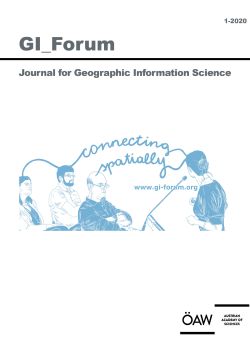Adrijana Car – Thomas Jekel – Josef Strobl – Gerald Griesebner (Eds.)
GI_Forum 2020, Volume 8, Issue 1
Journal for Geographic Information Science
Thomas Schneider,
Gernot Paulus,
Karl-Heinrich Anders
S. 73 - 88
doi:
10.1553/giscience2020_01_s73
Verlag der Österreichischen Akademie der Wissenschaften
doi:
10.1553/giscience2020_01_s73
Abstract:
In viticulture, yield prediction plays an important role, helping winegrowers to predict the start of the next growth stage of vines and to improve vineyard management decision-making. To predict a vineyard’s yield, it is necessary to gather accurate local information about the vine’s phenology and morphology, such as the volume of individual grapes. Traditional collection of these data and yield prediction rely on resource- and time-intensive direct visual and manual in-field work by viticulturists. Thus, only limited sampling in the vineyards is possible, carried out by humans. Automated procedures utilizing sensor-based systems reduce the data acquisition time and enable the collection of high-resolution data from the entire vineyard. Large-scale 3D models of vineyards can be generated from these data and used to analyse, for example, the vineyard’s yield or the vegetative stage of individual vines. We propose a concept for a 3D model that uses close-range photogrammetry. In a laboratory experiment, we tested the acquisition of multi-view image datasets from grapes using close-range photogrammetry and derived physical and morphological parameters from 3D grape models. The results could contribute to the design and implementation of a large-scale in-field experiment.
precision viticulture, vine, 3D grape model, physical parameters, morphological parameters
Published Online:
2020/06/25 07:55:20
Object Identifier:
0xc1aa5576 0x003b9d7c
Rights:https://creativecommons.org/licenses/by-nd/4.0/
GI_Forum publishes high quality original research across the transdisciplinary field of Geographic Information Science (GIScience). The journal provides a platform for dialogue among GI-Scientists and educators, technologists and critical thinkers in an ongoing effort to advance the field and ultimately contribute to the creation of an informed GISociety. Submissions concentrate on innovation in education, science, methodology and technologies in the spatial domain and their role towards a more just, ethical and sustainable science and society. GI_Forum implements the policy of open access publication after a double-blind peer review process through a highly international team of seasoned scientists for quality assurance. Special emphasis is put on actively supporting young scientists through formative reviews of their submissions. Only English language contributions are published.
Starting 2016, GI_Forum publishes two issues a Year.
Joumal Information is available at: GI-Forum
GI_Forum is listed on the Directory of Open Access Journals (DOAJ)




 Home
Home Print
Print
 References
References
 Share
Share
